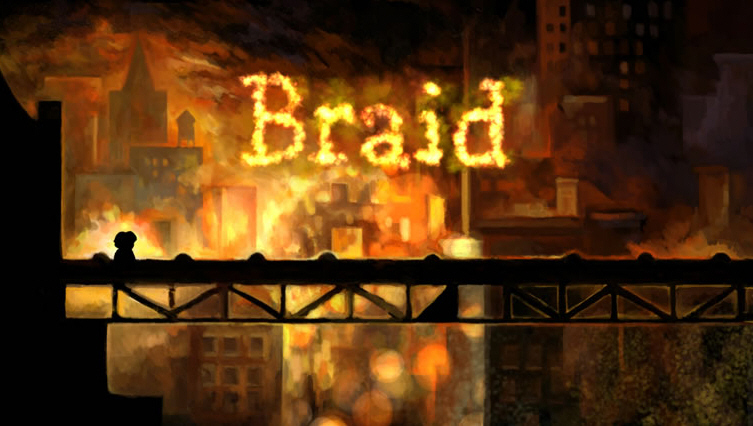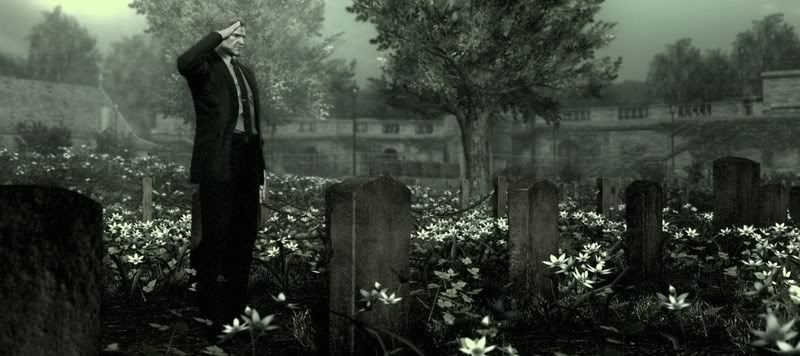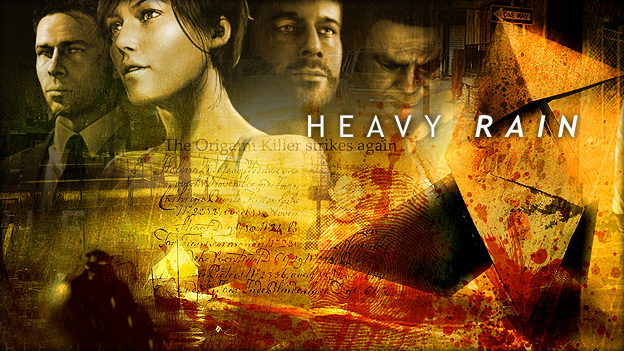.jpg)
With the dawning of the modern age of video games, the debate of whether or not video games can be considered art has raged through the video game industry. Gaming fanatics who believe they are an art form note the unique graphic visuals, beautiful or appealing music, and emotionally driven story-lines. Those opposed consider them money-grabs, or that the elements are not defined enough to be compared with other art forms such as paintings, poetry, music, or movies.
I want to start by saying that my stance on whether video games can be considered art is dependent upon two factors. The first is whether movies and music are considered art. If movies and music are considered art then video games surely can be. Video games take the audience into deeper emotional trips than music or movies ever could. Video games place the player directly into their story and have them experience the visuals, music, story first-hand. The second factor is the definition of art itself. Everyone has there own definition. My definition of art is anything that is portrayed to an audience which brings forth personal emotions through music and/or visuals, and/or story-telling. Video games fit this very well.
The Opposition:
Hideo Kojima, the creator of the Metal Gear Series, (which is considered by many to be a great example of video game art itself), has gone on record as saying that video games are not or will ever be art.

"The thing is, art is something that radiates the artist, the person who creates that piece of art. If 100 people walk by and a single person is captivated by whatever that piece radiates, it's art. But videogames aren't trying to capture one person. A videogame should make sure that all 100 people that play that game should enjoy the service provided by that videogame. It's something of a service. It's not art. But I guess the way of providing service with that videogame is an artistic style, a form of art." - Hideo Kojima
Kojima's ideas seem to be more business related rather than content driven. He never states whether or not the story, graphic style, or music that he and the developers put into the game can be considered art. I wonder if spending so much time as a game developer working on a video game, putting your ideas and even your emotions into a project makes you an artist. According to Kojima, it does not. But of course, Kojima and I are working on totally different definitions of art.

Roger Ebert made the video game media turn upside with protested rage when he put up a blog at the Sun Times website called "Video games can never be art." Ebert believes art is "the creation of one" and that group projects such as cathedrals or tribal dances all originate from one mind; one artist. It reminds me of how video games are created. There are many people working on a single video game at one time. But the original story, character concepts, and overall feel of the game usually come from one or a set few whose mind created the entire project in the first place. He takes games like Braid and Flower, which people often cite for the debate, and blows them off as if he just only watched the trailers. He only took small portions of the piece and criticized it. (It's obvious he didn't take the time to play Braid or he would have noted the importance of theme in gameplay. And don't get me started on his view of Flower.) Ebert is definitely entitled to his opinion but he should take a deeper look into the realm of video games before making such obviously hasty assumptions.
Those For:
Kellee Santiago, a game designer and producer for Thatgamecompany (creators of Flower, a game which was described by Game Informer magazine as "poetry"), defended video games as an art form during a presentation at USC. Santiago uses video games such as Waco Resurrection (an odd choice), Braid and Flower. While being a terrible game, Waco Resurrection was described by Santiago as being a certain person's representation of the events that occurred during the FBI siege of the Camp Davidian compound. David Koresh never summoned magical spells to fend off the officers. It was the developers artistic style and thought and it does follow Plato's definition of art. It's an imitation of nature or in this case history. She also uses Braid and Flower as examples which I will touch on later.
Kellee Santiago, a game designer and producer for Thatgamecompany (creators of Flower, a game which was described by Game Informer magazine as "poetry"), defended video games as an art form during a presentation at USC. Santiago uses video games such as Waco Resurrection (an odd choice), Braid and Flower. While being a terrible game, Waco Resurrection was described by Santiago as being a certain person's representation of the events that occurred during the FBI siege of the Camp Davidian compound. David Koresh never summoned magical spells to fend off the officers. It was the developers artistic style and thought and it does follow Plato's definition of art. It's an imitation of nature or in this case history. She also uses Braid and Flower as examples which I will touch on later.
I disagree with her idea that video games are in the cave wall paintings era of art. I believe they are more advanced whereas the old-late-70's-early-80's-Atari-era of video games fit the lines of cave wall paintings. (The ancient cave painters, as Santiago says, were the great artists of their time.) She also says that no one has ever mentioned a video game that could be compared to the great poets, story-tellers or artists. This may be true but how many artists, poets, and writers today could be compared to the greats of the past?
Game Informer magazine presented a feature titled "The Great Debate" in which various members of their staff chose certain video games that they felt exemplified what it meant to actually be art and explained why. Adam Biessener said how Mass Effect 2's method of giving the player numerous ways to progress. He said giving players the opportunity to meddle with on-going genocides, war, and other moral issues while feeling the emotion of your endeavors and consequences is art. "The NPCs (non-playable characters) in Mass Effect 2 are collections of pixels, code, and audio recordings just as Saving Private Ryan is made of celluloid and Anna Karenina is born of ink and paper."
Matt Miller describes video games as "musical themes, visual images, and writing" which is how I define art. Miller uses Super Mario Bros. as an artistic synthesis between these elements blended into one experience. "Ultimately, Super Mario Bros. is an artistic experience because, like all good art, it affects one experiencing it emotionally and empirically."
The Exhibition:
I have selected a few examples of gaming art. Each of these games use some, if not all, types of artistic element to bridge an emotional gap between it and the audience.

Shadow of the Colossus is a massively empty game yet filled with perseverance, courage, strength, and love. You set out as a young man named Wander who is determined to revive a woman named Mono from an eternal rest. A disembodied entity named Dormin tells Wander that it can revive her only if he were to destroy sixteen colossi. The entire game is basically you fighting against these gigantic beings. You travel vast lands of green emptiness only stopping, not for a rest, but to slay these massive beasts. The art comes from the story and design. Wander must venture and endure battle with Colossus, that are comparable to skyscrapers in height, and continue to fight them with every succeeding Colossus being more difficult than the last. It's the story of David and Goliath with an intimate and affection twist.

Braid is about theme, interpretation, art and emotion. The premise seems simple enough; a Mario-like game where you platform across an odd world, solving puzzles, in hopes of rescuing a sweet princess from an evil knight. Each level has a theme and short anecdotes that shed light, not on the story, but on the psyche of the protagonist, Tim. The first level, Time and Forgiveness, begins with a book that explains that Tim is off to rescue the princess from an evil monster. This happened because Tim made many mistakes. This level introduces the power to reverse time, thus preventing any mistakes the player may have made that would lead to Tim's death. Braid is a perfect example of gameplay, literary themes and story melded together to tell a story of perception through art. (Video contains spoilers.)

Using nothing but the PS3's motion controls, you guide a single flower petal through grassy plains and city suburbs in order to preserve the beauty of nature in an ever growing industrialized world. The message, through metaphor in imagery, is not preaching how ugly industrialization destroys the beauty of nature but rather that true beauty is finding a balance between these two opposing forces.

The art of Metal Gear comes from its portrayal of war and those involved in it. It's not just about mindless killing (you can play through the game without killing a single person), it's about the evolution of each character. Metal Gear started out as a simple stealth action game with the goal to thwart the plans of a terrorist from getting their hands on a weapon that could potentially destroy the world. The series ended in a way that makes you rethink every event in the series past. The evil terrorists you hated at the beginning of the series you will look at as war heroes and honorable patriots by the end. Each character is an epic all into themselves and there lies the art. The emotion that comes with the trailer alone is proof enough that Kojima is wrong and his brain child is gorgeous artwork.

Imagine that your first born child was killed in a car accident. Despite it being an accident, the blame and neglect falls on your shoulders. Your wife divorces you and your youngest child hasn't the faintest of interest in being around you anymore. Then your youngest is kidnapped by an infamous serial killer who prays on children. The blame is once again on you. This is the premise of Heavy Rain. You play as the father of a kidnapped child, a former detective searching for the killer, an FBI agent prying for justice, and a journalist who just happens to be entangled in the entire matter. Each character searches and fights their way to the killer in their own way. However, what they are searching for and what they are fighting for varies from character to character. The choice is given to the player. Would you kill an innocent person to save your son? Would you risk the termination of your job to see that a killer is behind bars? Would you risk being raped to help a friend? In a way, each character is a different personality of the player. You choose what they will say and what they will do. That's the art of it all. A medium that allows you to place yourself in crisis and gives you the consequences of your actions in the form of cutscenes.
The Verdict:
Art is something that entices people's emotion. Art is anything musical, visual, or story driven that has a certain purpose. Video games combine all these. All I have to say to the art community: Video games do have a place as an art form. The definition of art varies from person to person and in the minds of those loyal to the games, it is art. If something is so strong emotionally as to bring you to tears with its story, in awe with its visuals, or in a trance with its music; yeah, that's art.


No comments:
Post a Comment